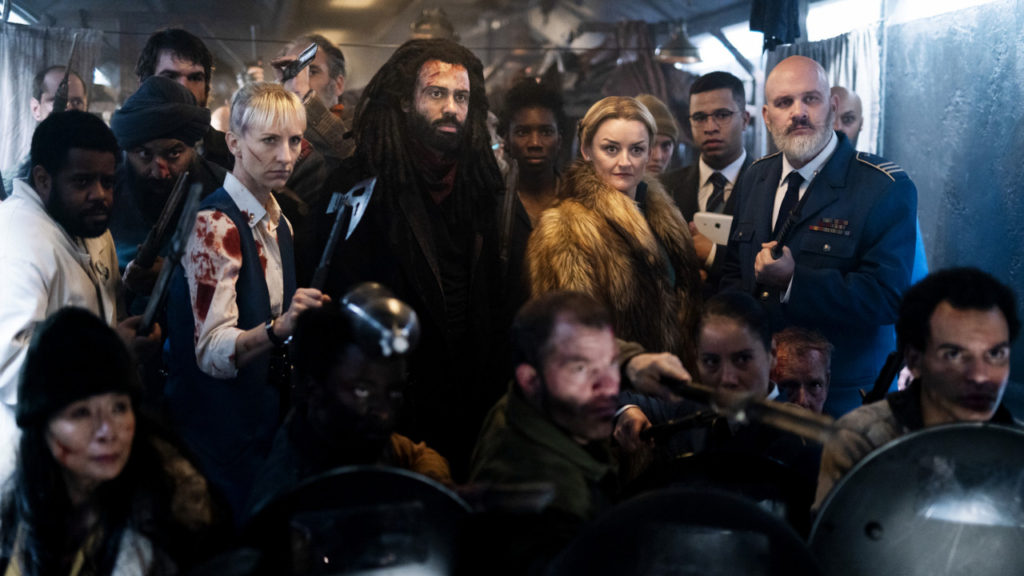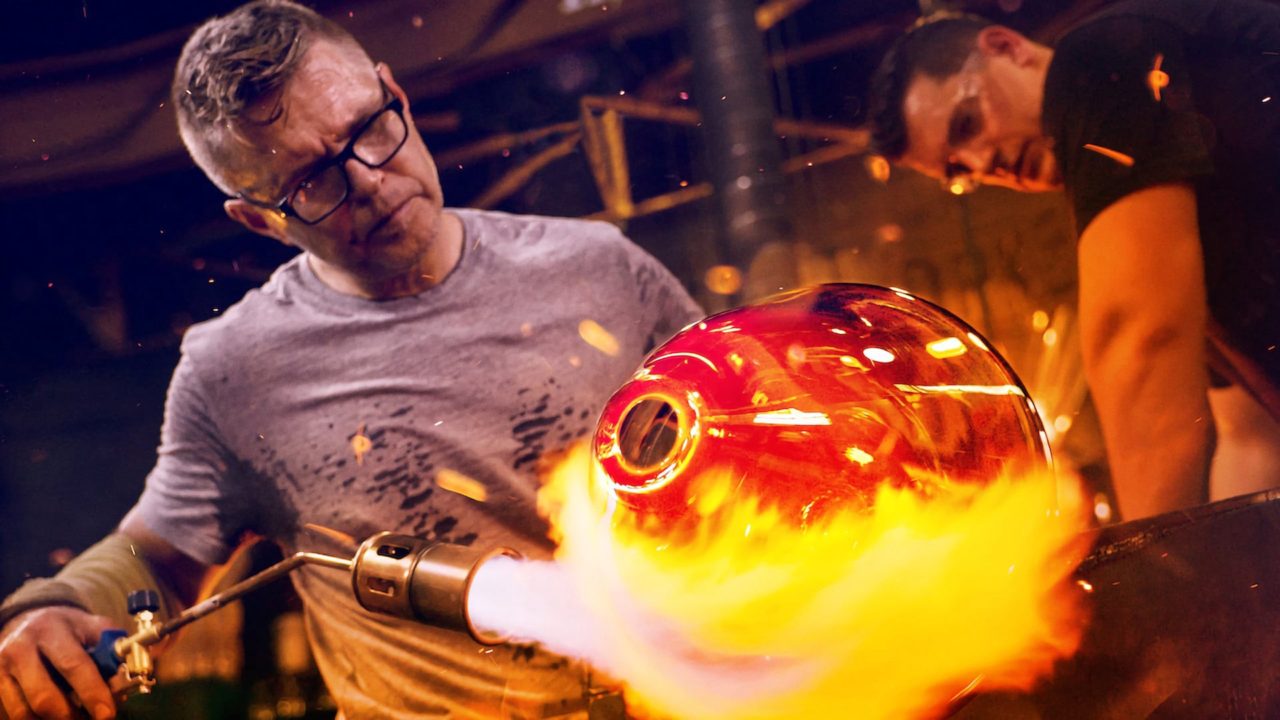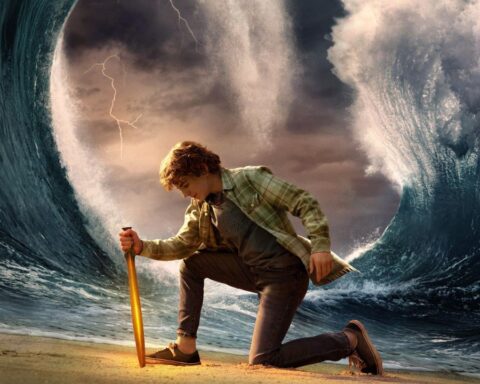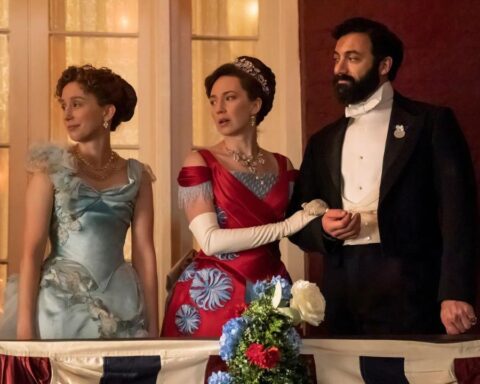If you skipped Season 1 of Snowpiercer you missed the clever reforging of Bong Joon-ho’s class struggle metaphor into a police procedural aboard the ark containing the last remnants of humanity, before it evolved further into exploring a different kind of class struggle, one more suited to longer form storytelling, than the movie.
As with the film, the series initially dealt with the uprising of the oppressed underclass at the rear of the train, or the “Tailies.” Kept locked in their carriage since the train had set out, they finally began to experience the ridiculous standards of living available to the other passengers “up train” and plotted their overthrow.
Unwanted stowaways aboard Wilford’s climate change lifeboat for the rich and famous, rather than race for control of the engine through bloody revolution (“He who controls the engine controls the world”), these Tailies, led by Daveed Diggs’ Andre Layton, sought to overturn the status quo in favour a more equitable one, for everyone.
As the newly appointed train detective, Layton explored the better quality of living available to the rest of the passengers as he investigated the first (unsanctioned) murder aboard Snowpiercer. With his new role allowing him relatively free movement about the train, he found allies and enemies in equal measure, as he built an alliance to overthrow the tyranny of Wilford, as communicated through the staff in “hospitality,” and enforced by his private army the Jackboots.
As the series progressed, however, it slowly became clear that there were a lot of differences between the series and the movie.
Train of Thought

This Snowpiercer had only been on its journey for 7 years rather than the 17 years of its movie counterpart, and while the bourgeois antics of the first class were toned down slightly from the wanton excesses of the movie, there was still enough of a cruel edge to the first class passengers that few would shed a tear when they meet an icy death.
The biggest divergence from the film, however, was the part played by the trains creator, Mr. Wilford. Early in the season it was revealed that not only was Wilford not on board the train, but he had been purposely left behind by Jennifer Connelly’s Melanie, who seized his personal party bus to live out the end of the world, in order to try and build a more sustainable home for humanity to weather the ice age outside.
As the series came to a close, a bloody revolution removed the Jackboots and some of the worst of first class, before Andre and a new democratic council could settle in to running the train in a more equitable manner. Their revolution was quickly interrupted by the arrival of “Big Alice,” a prototype Snowpiercer train engine, with Mr. Wilford on board.
Like the rest of the team here I very much enjoyed Snowpiercer’s first season, although I was slightly concerned that introducing Wilford as a new villain, right as Layton and his former enemies were about to be forced to work together, might have been a bit of a cop out.
Would all the drama inherent in former adversaries attempting to build a new democracy together be sidestepped as they united against a common enemy?
I needn’t have worried.
Despite the train initially uniting against Big Alice and her crew, all the same tensions remain from the first season, with a few new ones added for good measure.
Bean Means Business

After facing annihilation at the hands of Wilford, the opening of Season 2 quickly establishes a new status quo. Despite Wilford’s best efforts the two trains end up stuck together, with open hostilities between the two rains settling into a new Cold War between them, along with a border between the two.
Both trains need the other to survive, but while Layton is striving towards a life worth living for everyone on board, Wilford is solely focused on taking control of his train.
With the rehabilitation, or “removal” of most of the villains of the first season, the ever reliable Sean Bean provides a great foil this time around. He is all sharp suits draped around a cruel smile, hiding even crueler intentions, with a hint of derangement.
Despite glimpses into his inner circle, Wilford’s plans to retake the train are never fully revealed, only hinted at as he tries to win the hearts and minds on Snowpiercer, with promises of the return of “law and order,” to a simpler, more carefree life. (Gee, now why does that sound familiar?)
Rowan Blanchard is another great addition as Alex, Wilford’s chief engineer and daughter of Jennifer Connelly’s Melanie, who was left behind and presumed dead.
While Connelly gets a new facet to play opposite Alex, she also receives a new mission for the series, as its hinted that the ice age outside may not last quite as long as everyone thought.
Baby It’s Cold Outside?

Connelly continues to be excellent, as does the rest of the cast with plenty of time given to fleshing out the ensemble. Bess Till (Mickey Sumner) settles uneasily in to her new role as train detective, taking over from Layton as tensions run high on board, while Ruth Wardell (Alison Wright) has to come to terms with the return of Wilford, who she’s revered for so long, and the fact that he might not be all that he’s cracked out to be.
The show even finds new depths to explore in Steven Ogg’s Pike, who was mostly seen as a chancer and Tailie muscle last season.
With the focus spread across so many people, however, Daveed Digg’s Layton does suffer slightly, relegated to constantly reacting, to both Wilford’s plots and and the machinations of Zarah, his ex wife and now the mother of his unborn child.
That Train Keeps A-rollin’

Another casualty is Layton’s foster child, Miles, who all but disappears from the show this season, after being an integral part of the first.
The exploration of the psychosexual relationship between Wilford and a former paramour in later episodes also feels like a bit of a stretch for the show. It doesn’t quite seem to fit with the show’s grounded aesthetic but with three episodes left unseen, there’s still some time to stick the landing.
Despite the repeated refrain of “Snowpiercer, 1034 cars long,” the biggest problem facing the second season might be the lack of space given to many of its plots. After seven tense episodes, there are still a lot of balls in the air for the final three to catch before pulling into the station, even with the breakneck pace at which it barrels along.
If you enjoyed the first season of Snowpiercer, there’s still plenty to enjoy here, and if you missed it before now, it’s well worth your time.









Follow Us